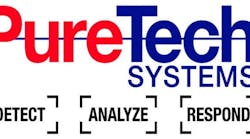Construction projects have a definitive start (idea) and a definitive end (structure). The owner receives as-built drawings and keys, and the construction project is completed. The owners are now the proud possessors of a building with lots of systems – and a big learning curve from drawing to structure.
Each subsystem in the building – from mechanical to electrical to security – had its own version of an as-built drawing. The harsh reality is that many of the as-built drawings do not exist or are wrong. If something is changed, many times the as-built drawings are not updated.
What solution can alleviate the confusion? Enter the age of the Digital Twin.
As-Built Drawings Enter a New Age
The Digital Twin concept was initially recognized in 2002; however, like most technologies, implementation was slow and cost-prohibitive. Yet in 2017, with Internet of Things (IoT) applications gaining adoption, research firm Gartner estimated that “within three to five years, billions of things will be represented by digital twins, a dynamic software model of a physical thing or system.”
Today, the Digital Twin is no longer a concept, but a required deliverable for many end-users. It is more interactive and reliable than previous 2D as-built drawings. For many system integrators, it is a value add to the customer and a necessary tool for proper support and maintenance. For the consultant, it is a valuable training tool when conducting employee training and awareness.
Digital Twins Defined
Back in 2017, technology futurist Bernard Marr in Forbes described a digital twin as “a bridge between the digital and physical world.” Digital Twins are a digital representation of an asset that can be interacted with throughout the entire lifecycle – design, build, operation and potentially refresh. The Digital Twin is a living as-built that provides all stakeholders with detail at their fingertips.
The Digital Twin may be an individual asset, a building, a landscape including buildings, or even a city. Digital Twin technology can enable full interaction of the physical from the digital, or to provide stakeholders tabletop simulation exercises to address situations before they happen.
The Digital Twin Continuum
Digital Twins, like many other technologies in the security industry, are on a continuum. The reality is that many “twins” offer pieces in the continuum, but can jump across the continuum as needed. The keys to a successful digital twin are completeness and current versioning. Resolution and how interactive the system is dependent on the need of the end-user. Here are a couple of examples:
Living as-built (maturation levels 0-1): A product using simple camera images can provide a visual representation of the floorplan by walking the building once it has been completed and all devices are installed. That is a digital twin. As systems are updated the floorplan is walked and updated with the date/time and saved as a version of the system. This visual representation can be referenced by all stakeholders from their computer to provide a geospatial understanding of the asset.
Asset Management (maturation level 2): Asset management is the integration of Light Detection and Imaging (LiDAR) technologies or 3D Scanning to provide 3-dimensional, 4-dimensional, or 5-dimensional geospatial views of the asset. LiDAR or 3D scanners are used to create a point cloud, a set of data points that represent a three-dimensional digital version of the asset. Point Clouds are then used to create a Building Information Model (BIM) of the asset. Once the BIM has been created, additional data sources and metadata can be layered in to enhance asset management and asset functionality. Digital Twins used for asset management can offer inspection-level detail to provide the user a virtual interactive walkthrough of the asset.
Real-Time Situational Awareness (maturation levels 3-5): While the living as-built and the asset management versions of a Digital Twins provide overviews of the asset, situational awareness platforms provide real-time data and interactive capabilities.
Now IoT sensors, BACnet sensors, SCADA data and more can be visualized in detail and interacted with in real-time. The Digital Twin is dependent on the level of completeness of detail, the completeness of sensor data captured, and the integration of technologies.
This type of Digital Twin may have a Physical Security Information Management (PSIM) look and feel, but should be more than a PSIM. The situational awareness Digital Twin has the possibility of integration to allow the end-user stakeholders to interact with different systems in real-time, controlling the physical from the digital.
Digital Twins can Deliver Real Profits
To quote from Bernard Marr once more: “Digital twins are powerful masterminds that drive innovation and performance. Imagine it is your most talented product technicians with the most advanced monitoring, analytical, and predictive capabilities at their fingertips.”
Most would acknowledge that from new building to system refresh, the traditional as-built drawing is no longer valid; flipping pages or not having pages in the first place. The digital twin has proven to bring an enhanced user experience for all stakeholders.
Many end-users realize the Digital Twin value as a deliverable and expect to pay for the service. Since Digital Twins are only as good as their versioning, continued versioning should be considered and implemented; bringing ongoing relationships and additional revenue to the provider.
As Digital Twins are on a continuum; clear customer expectations into the level of detail and interaction needed must first be determined. The system integrator who can deliver the digital twin will lead from front – increasing revenue and enhancing customer relationships.
Jon Polly is the Chief Solutions Officer for ProTecht Solutions Partners www.protechtsolutionspartners.com, a security consulting company focused on smart city surveillance. Connect with him on linkedin: www.linkedin.com/in/jonpolly.



